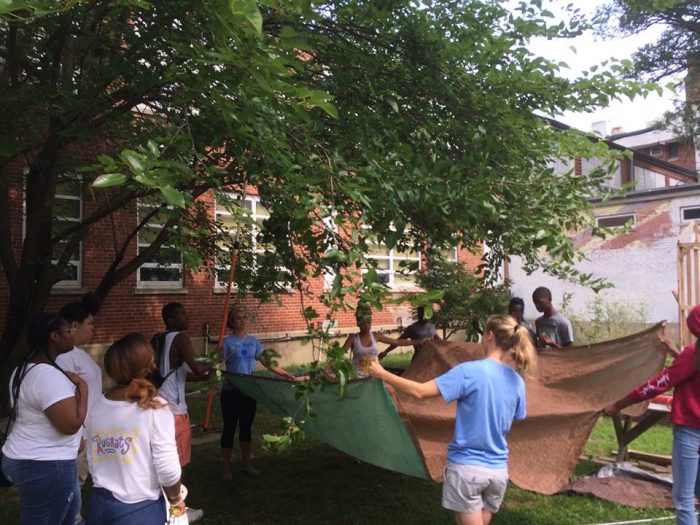FOOD FORESTS: THE PERFECT MATCH FOR RELUCTANT GARDENERS
FAIR FARMS
Photo Credit: Beacon Food Forest
The number of Americans producing their own fruits and vegetables has increased more than 25 percent since 2008, growing to 44 million of our friends and neighbors. Yet, many reject growing their own food, worried that home gardening is too large a time, labor, and monetary commitment. Hopefully, the concept of a self-sustaining food forest will inspire people to reconsider their perceptions and investigate how they could make growing food a part of their lives.
So, what is a food forest? A ‘food forest’ is an agricultural concept that takes root in permaculture, a practice that promotes self-sustaining, food-producing ecosystems by emphasizing perennial, low-maintenance indigenous crops that can survive off of natural nutrient inputs, drainage patterns, and climate. Food forests require little maintenance, but are very fruitful; a perfect combination for the reluctant home gardener.

Photo Credit: Baltimore Orchard Project
“Food Forests are grown like a forest, not in the forest,” explains Michael Judd, the principal designer at Ecologia Design. “By observing the natural patterns of a healthy forest ecosystem, we see a lot of intimate, successful relationships. A healthy forest converts solar energy into biomass, so why not learn from it to grow our own food systems?”
Whether it’s a 2,000 year old natural forest in Morocco, a city park in Tel Aviv, the Beacon Food Forest in Seattle, the Clifton Park Food Forest in Maryland, or a spot in the woods behind your home, food forests are flourishing regardless of shape, size, or species composition, and provide high volumes of food for their communities.
If properly planned, food forests can exist anywhere and be any size.
“The heart of the concept is diversifying plantings to support one another, a mini-ecosystem, if you will,” Judd explains. “Food forests can be utilized just about anywhere you can find a patch of sun. [It] can be a ten by ten-foot patch or stretch along a fence line, a finely blended cornucopia of multi-purpose species bordering the pool, or mixed into the rose bed.”
In fact, urban spaces across the globe have become the site of many food forest developments, as urban orchards, edible parks, and city gardens must be efficiently and harmoniously planned to be fruitful. For example, a 25 year old food forest in England is only one-fifth of an acre, but it yields one ton of produce a year.
If a large-scale forest is impractical, many cities have utilized permaculture theories in another way: implementing successful orchard projects throughout neighborhoods. For example, the Baltimore Orchard Project has planted thousands of fig, pear, apple, serviceberry, and mango-like pawpaw trees on public and private land throughout Baltimore.
Fair Farm’s partners Ecologia: Edible + Ecological Landscapes and Forested – Creative Ecology are two great resources for Maryland homeowners to learn about how they can create bountiful, low-maintenance edible landscapes of any size around their home. Both offer workshops and tours so that Marylanders can gain a vision of what permaculture and food forests in the region can offer.

Photo Credit: Wikimedia Commons
If you are interested in growing your own food, Judd recommends exploring all facets of permaculture, a methodology that “gets pinned under gardening a lot but is a whole universe of design skills that addresses nearly all human habitat needs, from natural building, watershed design, market economics, social realities, [or] global networking.”
Judd recommends starting with a few simple fruits that thrive in the Chesapeake region. He is a big fan of paw paw, persimmons, mint, mushrooms, elderberry, and aronia, which Judd calls ‘Wonderberry,’ for its “amazingly abundant, fat, dark purple berries that cook into an amazing elixir.” He believes that planting a diversity of species unlocks “a world of wonder that has endless variations and relations.”
- If you’re ready to begin planting, you can explore Michael Judd’s guide, Edible Landscaping with a Permaculture Twist, or learn more in this step-by-step guide.
- Are you interested in experiencing a food forest before growing your own? On September 24, enjoy an evening of fine dining and live music at the Food Forest Feast on the grounds of Forested – Creative Ecology’s forest garden!


Replies
beautiful and important...